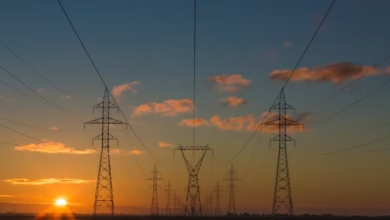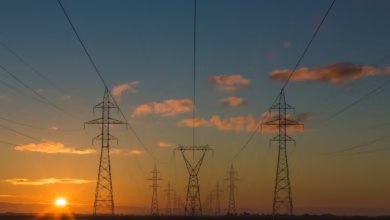Transforming Energy Infrastructure: How Smart Grids are Revolutionizing Energy Efficiency and Supporting the Renewable Energy Transition

In an era marked by the pressing challenges of climate change and the urgent need for energy efficiency, smart grids are emerging as a transformative solution in modernizing electricity distribution. These advanced systems leverage cutting-edge technology to enhance the performance of energy infrastructure, enabling a seamless integration of diverse energy sources such as renewable energy, fossil fuels, nuclear energy, and more. As we navigate the complexities of energy markets and energy policy, smart grids play a pivotal role in improving energy security while facilitating the transition to greener alternatives.
This article delves into the multifaceted advantages of smart grids, exploring their critical role in enhancing energy efficiency and security, their support for integrating renewable energy sources like solar power, wind energy, and hydropower, and their potential for fostering future innovations in energy storage and electric vehicle integration. By examining these key areas, we will uncover how smart grids not only contribute to a more sustainable energy landscape but also pave the way for advancements in energy R&D, investment, and overall energy economics. Join us as we explore the future of energy transportation and the promise of a cleaner, more resilient energy system.
- 1. The Role of Smart Grids in Enhancing Energy Efficiency and Security
- 2. Integrating Renewable Energy Sources: How Smart Grids Support the Energy Transition
- 3. Future Innovations in Energy Storage and Electric Vehicle Integration within Smart Grids
1. The Role of Smart Grids in Enhancing Energy Efficiency and Security
Smart grids play a pivotal role in enhancing energy efficiency and security, acting as a backbone for modernized electricity systems. By integrating advanced technologies and real-time data analytics, smart grids facilitate better management of energy resources, allowing for the efficient distribution of electricity derived from various sources, including renewable energy, fossil fuels, and nuclear energy.
One of the most significant advantages of smart grids is their ability to optimize energy consumption. By providing real-time feedback to consumers, smart grids empower individuals and businesses to make informed decisions about their energy use, ultimately leading to improved energy efficiency. This is especially crucial in the context of the ongoing energy transition, where the integration of green energy sources such as solar power, wind energy, hydropower, and bioenergy is essential to reduce dependency on fossil fuels and mitigate climate change.
Moreover, smart grids enhance energy security by enabling a more resilient and responsive energy infrastructure. In the event of disruptions, such as natural disasters or cyberattacks, smart grids can quickly reroute electricity and maintain supply continuity. This resilience is vital as energy markets evolve with the increasing penetration of distributed energy resources, including electric vehicles and energy storage systems. These innovations not only contribute to energy efficiency but also support energy imports and exports, thereby shaping global energy trends.
The implementation of smart grid technology also aligns with advancing energy policy and economics, promoting energy investments that foster sustainable practices. For example, initiatives such as carbon capture and hydrogen energy are becoming more feasible through the insights provided by smart grids, which facilitate energy R&D and the efficient transportation of energy. Consequently, smart grids are instrumental in creating a flexible energy landscape that can adapt to changing demands while promoting the use of clean energy solutions.
In summary, smart grids are crucial in enhancing energy efficiency and security, enabling a reliable and sustainable energy future. As they evolve, they will continue to play an essential role in shaping energy policies and driving innovations that support the global energy transition.
2. Integrating Renewable Energy Sources: How Smart Grids Support the Energy Transition
The integration of renewable energy sources into the electricity grid is a vital component of the energy transition, and smart grids play a crucial role in this transformation. As the world shifts away from fossil fuels and seeks to embrace green energy, smart grids facilitate the seamless incorporation of various renewable energy sources, including solar power, wind energy, hydropower, and bioenergy. This integration not only enhances energy efficiency but also supports energy security by diversifying the energy mix.
Smart grids leverage advanced technologies such as energy storage systems and real-time data analytics to optimize the generation and distribution of electricity. By managing the variability of renewable energy sources, smart grids ensure a stable and reliable power supply, even when natural conditions fluctuate. For example, during peak sunlight hours, solar power generation can surge, and smart grids can effectively distribute this excess energy to meet demand or store it for later use, promoting energy storage solutions that enhance grid resilience.
Additionally, smart grids enable the connection of distributed energy resources, such as rooftop solar panels and small wind turbines, allowing individuals and businesses to contribute to the energy market. This participation not only empowers consumers but also encourages energy investments in local communities, fostering economic growth and innovation in energy R&D. As energy markets evolve, smart grids facilitate the integration of electric vehicles, which can serve as both energy consumers and storage units, further promoting the use of renewable energy.
Energy policies that prioritize smart grid technology are essential in accelerating the energy transition. Governments and stakeholders must collaborate to develop frameworks that support investments in smart grids, ensuring they are equipped to handle the complexities of renewable energy integration. By adopting effective energy policies and promoting energy innovations, nations can effectively navigate global energy trends and address the challenges posed by climate change.
With the transition to a sustainable energy future, smart grids represent a cornerstone of modern energy economics, enabling countries to reduce their reliance on fossil fuels and nuclear energy while enhancing energy exports and imports. Ultimately, the integration of renewable energy sources through smart grids is a vital step toward achieving a cleaner, more sustainable energy landscape that addresses both energy security and climate change.
3. Future Innovations in Energy Storage and Electric Vehicle Integration within Smart Grids
The future of smart grids is intricately tied to innovations in energy storage and the integration of electric vehicles (EVs), both of which are pivotal in enhancing energy efficiency and supporting the transition to renewable energy sources. As global energy trends shift towards a more sustainable framework, energy storage technologies are gaining momentum, crucial for managing the intermittent nature of solar power and wind energy. Advanced battery systems, including lithium-ion and emerging solid-state technologies, offer promising solutions to store excess energy generated during peak production times for later use, thus ensuring energy security and stability in energy markets.
Additionally, the seamless integration of electric vehicles into smart grids represents a significant innovation. With the growing adoption of EVs, these vehicles can act as distributed energy resources, providing energy storage capabilities that can support the grid during peak demand periods. By employing vehicle-to-grid (V2G) technology, EVs can return stored energy back to the grid, enhancing energy efficiency and reducing reliance on fossil fuels. This integration not only aids in managing the demand for energy but also supports the overall energy transition towards greener alternatives.
Moreover, the evolution of energy policy will play a crucial role in facilitating these innovations. Policymakers must prioritize energy investments in both energy R&D and infrastructure development to foster an environment conducive to the growth of smart grids. As carbon capture technologies advance and bioenergy becomes more prominent, the combination of these developments with smart grid technologies will help mitigate climate change impacts and support the transition to a low-carbon economy.
In summary, the future of smart grids will be significantly shaped by innovations in energy storage and electric vehicle integration. These advancements will not only promote energy efficiency and enhance energy security but will also align with the global push towards renewable energy, ensuring a sustainable energy landscape for years to come.
In conclusion, the modernization of electricity grids through smart technology represents a pivotal shift towards enhancing energy efficiency and security in our increasingly interconnected world. As we've explored, smart grids play a crucial role in integrating renewable energy sources, such as solar power and wind energy, thus supporting the ongoing energy transition from fossil fuels and nuclear energy to greener alternatives. This transition not only aligns with global energy trends but also fosters energy innovations that are essential for addressing climate change.
Moreover, the future of smart grids looks promising with advancements in energy storage solutions and the integration of electric vehicles, which will further optimize energy transportation and consumption. By facilitating distributed energy systems and embracing diverse energy markets, smart grids enable a more resilient and sustainable energy infrastructure.
As energy policies evolve and investments in energy R&D increase, the potential for smart grids to revolutionize our energy landscape is immense. With ongoing developments in technologies like carbon capture and hydrogen energy, we can anticipate a robust framework that supports energy security, drives economic growth, and bolsters our commitment to green energy initiatives. As stakeholders continue to collaborate and innovate, the smart grid will undoubtedly be at the forefront of shaping a cleaner, more efficient energy future.
References:
– [Insert credible sources here]





